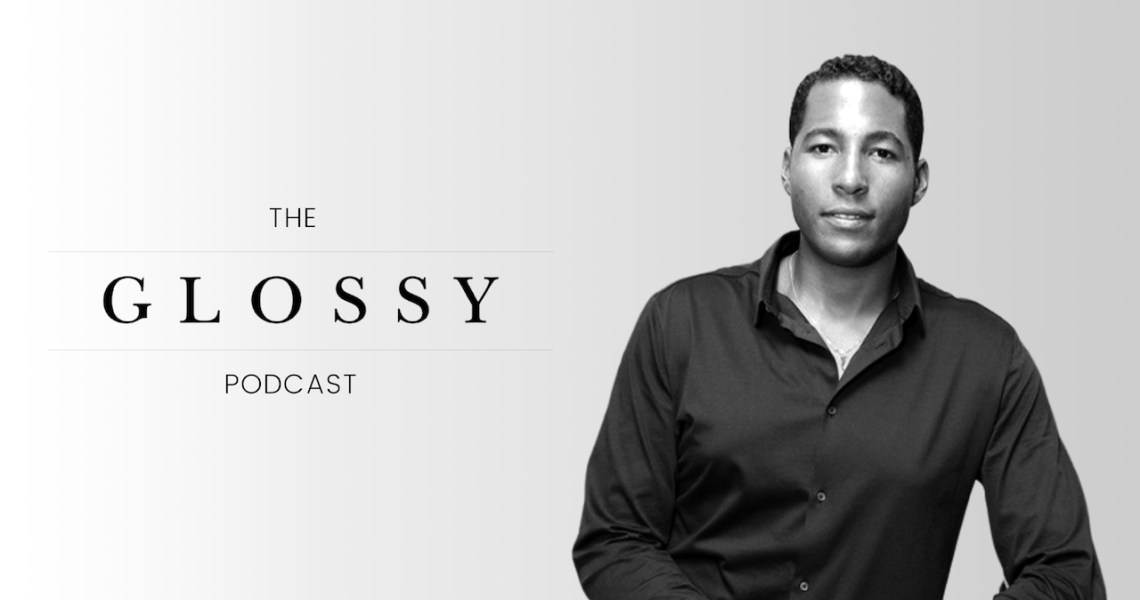Subscribe: Apple Podcasts | Stitcher | Google Play | Spotify
Maison de Mode CEO Hassan Pierre knows that if sustainable fashion doesn’t look as good as everything else on the market, it’s not going to make much of a positive impact on the environment.
“I always say that if a shirt saves a thousand lives, but it’s ugly, no one’s going to buy it,” Pierre said on the Glossy Podcast. “So we need, as a retailer, to make people dream and to really make people want to buy things — not just because they’re good, but also because they want to wear them.”
Maison de Mode launched in 2015 as a two-part business — it’s an online platform selling sustainable fashion from different labels (both off-the-rack and made-to-order) and a consulting firm, too. Maison de Mode makes a cut of every purchase on the marketplace side, and as a whole, the business grew 161% between March and April, Pierre said.
Like every online retailer, Maison de Mode keeps an eye on purchasing data. During the pandemic, consumers have turned to many of the categories you’d imagine — “anything that is really beautiful and cozy and comfortable,” Pierre said — but also an unexpected one: fine jewelry.
“We would be out of touch if we were just selling ball gowns and high heels,” Pierre said.
Here are a few highlights from the conversation, which have been lightly edited for clarity.
Ad position: web_incontent_pos1
Maison de Mode, A two-part business
“Maison de Mode is a two-part business. We call ourselves a platform business, as a whole. We have our marketplace, which is our curated shopping destination, and we have Mode Communications, which is a consulting and communications arm. The idea is to be a company that not only has major touchpoints from a media perspective, but also a marketplace perspective — fusing both of those together to have a seamless business, in the sense that you have a B2B and a B2C business. That’s really where we’re looking to head. A lot of people view us as strictly a marketplace and don’t see the B2B side of it. As we can continue to expand and grow, I think we’ll be able to fuse them a bit more naturally, whether that be through launching a magazine or some sort of media component, [or running] a ton of events and a big entertainment footprint.”
The definition of sustainability has gotten broader
“When we first started, when this conversation on sustainability and fashion wasn’t even a concept, it was very focused on the material: organic cotton, organic linen — that’s what sustainable fashion was. That conversation then developed and moved into ‘OK, well who’s producing the clothes? Are they being paid a living wage? Are they working in proper conditions?’ The hand of who makes your clothes also became important, and that became a sustainable touchpoint. The conversation evolved from not just being about the actual textiles and materials, but to also [include] how we produce it. The conversation has also moved into how we consume fashion.”
On whether wholesale and sustainability can co-exist
“The current wholesale model is definitely in need of some restructuring. I think that down the road, if it’s done correctly, [wholesale and sustainability] can mix. In the current state of things, I just don’t think it really goes hand-in-hand or makes sense. I think if someone wants to rethink that model and how it could be more conscious and thoughtful — not just from a profit perspective, but from an environmental or social perspective — then there’s room for that in the future.”
Consumer trends due to the pandemic
“This whole pandemic, with people really looking into their health and understanding the importance of that, has really accelerated the general consumer’s interest in sustainable fashion. For us, that was really beneficial, and I think that the traditional retailers that were closing down during that time and couldn’t service consumers were also a great thing for us, from a business perspective. Our business shot up 161% between March and April, which was really insane to see. And in terms of what people are buying, it’s exactly what you would expect. We call it ‘luxe loungewear’ — anything that is really cozy and comfortable, but also aesthetically great. Home goods was a product category that grew quite a bit, which makes sense. People were spending time in their home and looking to make that home their sanctuary. And then fine jewelry, which I always think is so interesting.”




